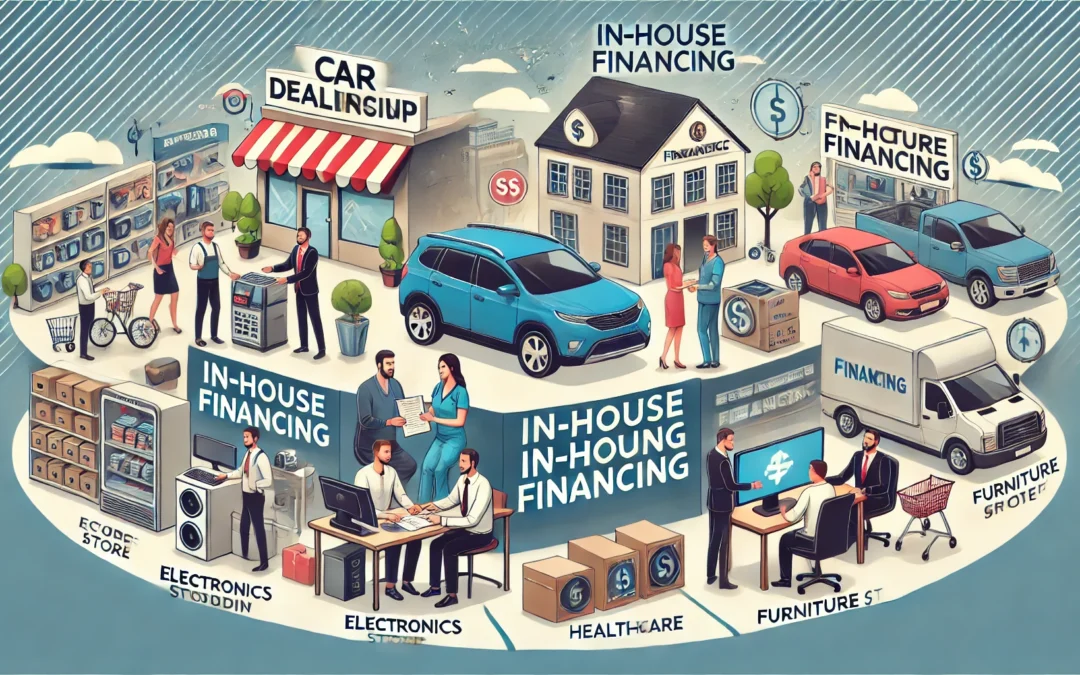House financing is a debt-based method, where the firm of BS increases its sales by offering some form (sell) of bundles or presented organizations to give cash-cost-constraints for goals. It is indeed a well known format of financing and used in many industries including automotive, semiconductors, furniture for movie tickets to health check-ups. This allows customers who have bad credit or need quick financing to be able to acquire products and services without the strict guidelines of third-party lending. This ultimate guide covers everything you need to know about in-housing, with benefits and challenges it tapes into real life examples.
What is In-House Financing?
In-house financing means that a business provides the financial options, so that customers are able to buy goods or services by making payments over installments directly from the seller. This form of financing eradicates the need to depend on third-party financial institutions, making sales that much easier and less restrictive for customers based on credit score.
How In-House Financing Works
There are a few parts of in-house financing:
Application and Approval: Dealer direct-to-customer financing applications BUS. The application is typically less of a hassle and quicker than traditional loans.
Terms and Conditions: The terms like interest rate, how long your repayment period is going to be for the loan and any fees you will incur.
Buy and payment: When the approbation is done, the purchaser can buy anything he wants. Instead, it pays the seller in payments arranged over time.
Benefits of In-House Financing
Simpler Approval: In-house financing leans on the most lenient credit necessities of all lenders, rendering it available to any individual with bad or no history.
Fast Process: Approval process is normally immediate so that customers are able to make their purchase as quickly.
Build Customer Loyalty: Flexible Financing options can help businesses forge long-lasting relationships with customers and enable repeat business.
Challenges and Risks
In-house financing charges higher interest rate with the aim of balancing potential risk for bearing by seller
Good things take time and investment: Even if your business is profitable, setting up an internal financing operation will involve development of software programs that can handle the complexities ( interest rates, loan amounts and terms), additional staff to review applications in a timely manner so you do not lose out on sales while waiting for approval AND most importantly compliance with financial regulations
Default risk: The fundamental risks of default are always present, especially when dealing with poor-credit customers. It is better to have strict risk management strategies in place which would reduce any losses that might get incurred.
Case Studies and Examples
Automotive Industry
Automotive companies are one of the most recognized users and beneficiaries of in-house financing. This remains true even if you get a loan from the car dealership themselves, something that is not uncommon among those with poor credit. For instance, Buy Here Pay dealerships provide in-house financing which lets you buy a vehicle under the payment terms of your choice. Vigo says the programmed allows dealers to sell more cars – and therefore shift their inventory quicker – by catering to a wider customer base, but at higher interest rates and fees.
Electronics and Appliances
In-house financing is also used by retailers such as electronics and appliance stores to increase sales. One example: A consumer who wants to buy a $1,000 TV but does not have the cash can use one of the store’s financing plans. A 12-month installment plan at a local store with a 5% monthly interest rate might make the purchase more feasible for this consumer.
Healthcare
Healthcare providers are exploring in-house financing, especially so with elective treatments such as cosmetic surgery or dental work where insurance coverage is not applicable. Providers give their patients the option to finance procedures over time. Not only does this approach improve access to care, but also helps providers more readily treat a diverse patient population.
Implementing In-House Financing
There are several crucial steps involved in launching an In-House financing program
Evaluate Working Capital Needs: Confirm that the business has enough working capital to service loans until receivables start trending back up.
This point of differentiation enables you to invest in technology which can be expensive at the start but will lower your operating costs over time; making specialized loan management software an essential tool for adequately handling incoming applications, outstanding payments and overall account mmanagement.
Professional Training of Staff: As more fintech solutions will continue to come in the system; their evaluation, approval and monitoring also need training including customer service representatives who can intercept identities that are being targeted by fraudsters for money laundering.
Regulatory: Avoid legal pitfalls by ensuring compliance with all state and federal laws related to lending practices.
Also Read: Wells Fargo Data Breach of 2024: Implications & Lessons Learned
Conclusion
The flexibility and customer friendly benefits of in-house financing are thus a great asset for businesses to maximize sales, retain customers on their platforms forever using other services/products as well. But to work it needs good planning, investment and risk management. Knowing the advantages and disadvantages not only will help your business succeed in its strategic priorities, but enjoy higher customer engagement through carefully implemented in-house financing programs which serve to benefit everyone.

